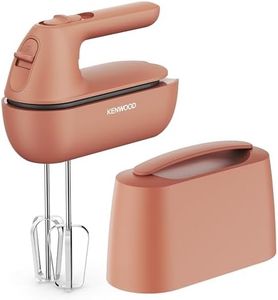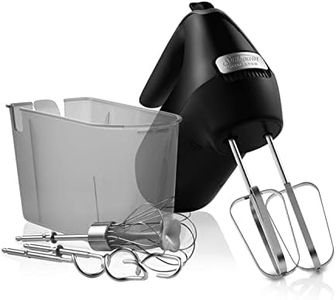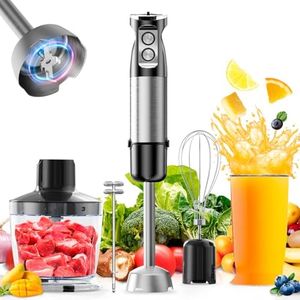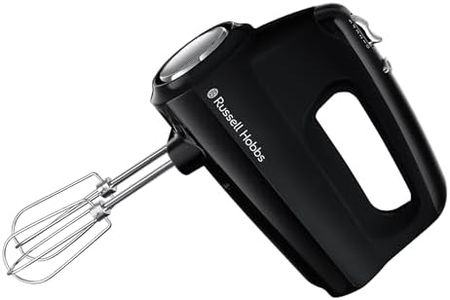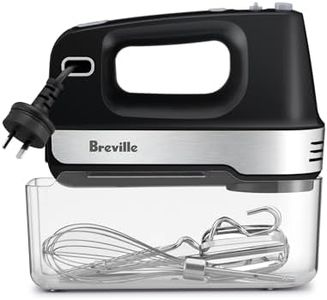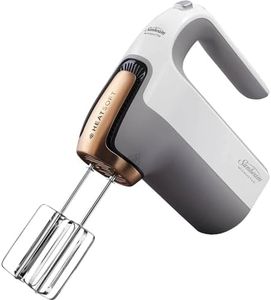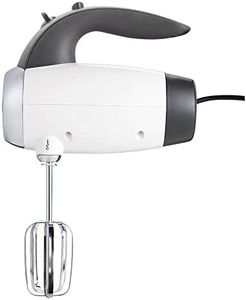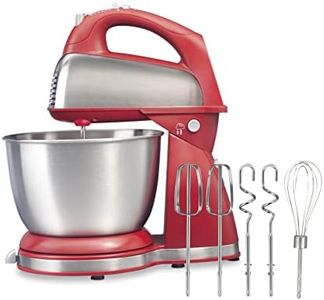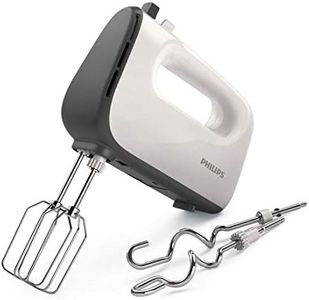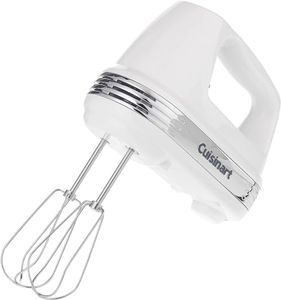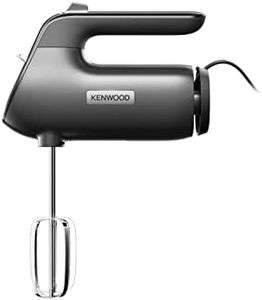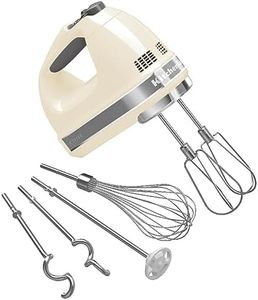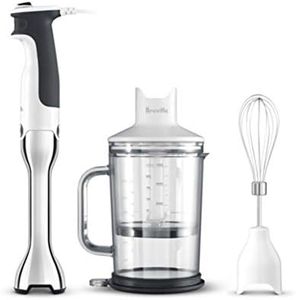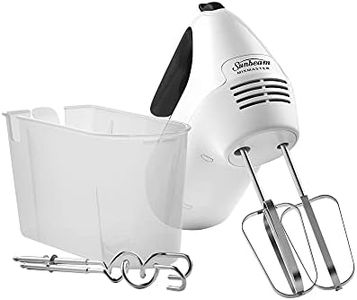We Use CookiesWe use cookies to enhance the security, performance,
functionality and for analytical and promotional activities. By continuing to browse this site you
are agreeing to our privacy policy
10 Best Hand Mixers
From leading brands and best sellers available on the web.Buying Guide for the Best Hand Mixers
Choosing the right hand mixer can make your cooking and baking much easier, letting you efficiently mix, whip, and blend ingredients without the bulk of a stand mixer. It's important to focus on what types of recipes you make most often and what features will make your experience smoother. By understanding the main features, you can better match a hand mixer to your needs and habits, leading to more enjoyable kitchen time and reliable results.Power (Wattage)Power in a hand mixer is measured in watts and tells you how much force the motor can provide. Higher wattage mixers can handle thicker batters and knead dough more easily, while lower wattage options are best for simple mixing, like whipping cream or eggs. Light users can go for mixers around 150-250 watts, ideal for cakes or frostings. If you plan to mix cookie dough or bread dough, look for mixers over 300 watts. Think about the types of tasks you'll do most, and choose a power level that won't struggle or overwork itself during your typical recipes.
Speed SettingsSpeed settings determine how much control you have over how fast the beaters spin. More speed options mean more flexibility for a variety of ingredients. Basic mixers may have 3 speeds, suitable for mixing and whipping, but won't give fine control. Mixers with 5 to 6 speeds allow for gradual increases, which is great if you mix both light and heavy ingredients. If you often make recipes with delicate and chunky mixes, or worry about splattering, more speed choices will help you work smarter. If you mostly do simple mixing, fewer speeds may be enough.
AttachmentsHand mixers can come with different attachments, like standard beaters, dough hooks, or whisk attachments. Standard beaters are good for most mixing, but dough hooks are designed for breads, and whisks are best for whipping cream or meringues. Consider what you will be making—if it's mostly cakes and cookies, beaters and a whisk are enough; if you like to bake bread or pizza, dough hooks are very useful. Look for mixers with the attachments that suit your recipes, but avoid unnecessary extras you'll never use.
Weight and ComfortThe weight and grip design of a hand mixer determines how comfortable it is to use, especially for longer mixing sessions. Lighter mixers (about 1-2 pounds) are easy to hold and maneuver for a few minutes, which is great for light tasks or smaller hands. Heavier mixers offer more stability and are less likely to bounce around in thick mixtures, but they can tire your arm if you're mixing often or for long periods. Try to imagine your typical use—if you'll be mixing large batches or often, balance comfort and stability.
Ease of CleaningEase of cleaning is important for convenience. Most hand mixers have detachable beaters and attachments, which should be dishwasher-safe. The mixer body should have as few crevices as possible where batter can get trapped. If you like to keep things simple and quick in the kitchen, prioritize easy-release attachments and smooth surfaces for efficient cleaning. Think about whether you'll clean up by hand or in a dishwasher, and choose accordingly.
Noise LevelNoise level refers to how loud the mixer is when running, which can make a difference if you want a quiet kitchen environment. Louder mixers are sometimes more powerful, but can be unpleasant to use for extended times. Quieter mixers are easier on the ears, especially if you’ll use it frequently or live with others sensitive to noise. If noise bothers you, look for reviews or product descriptions mentioning quiet operation, rather than just picking the most powerful option.
